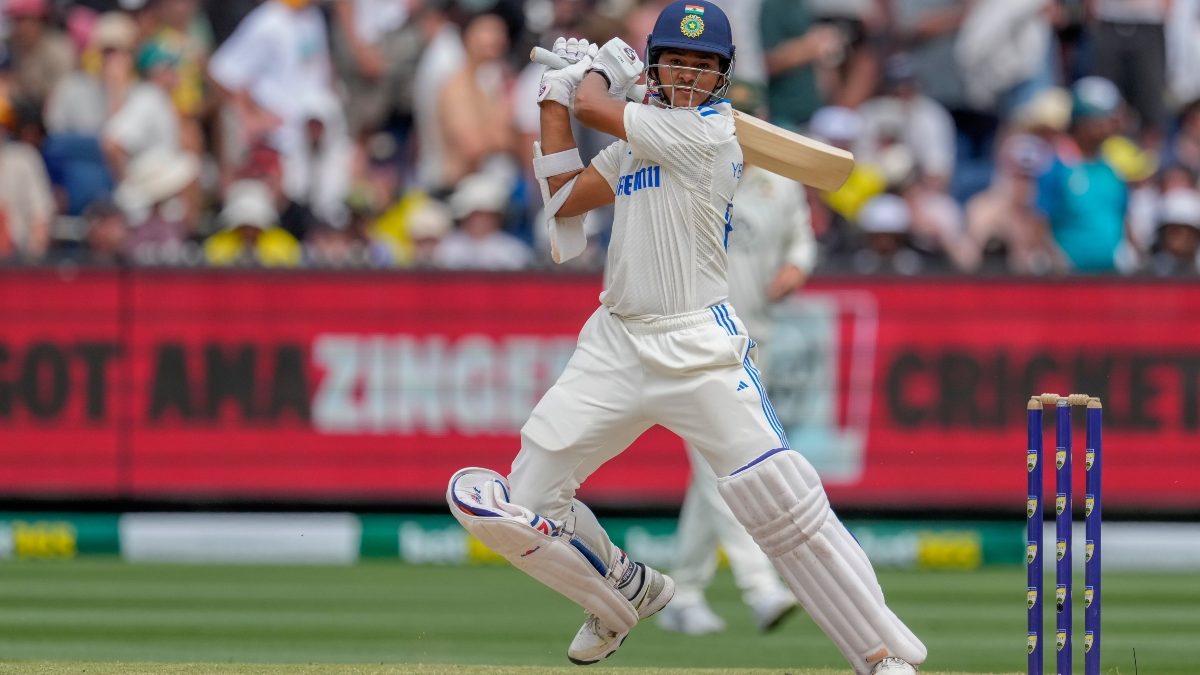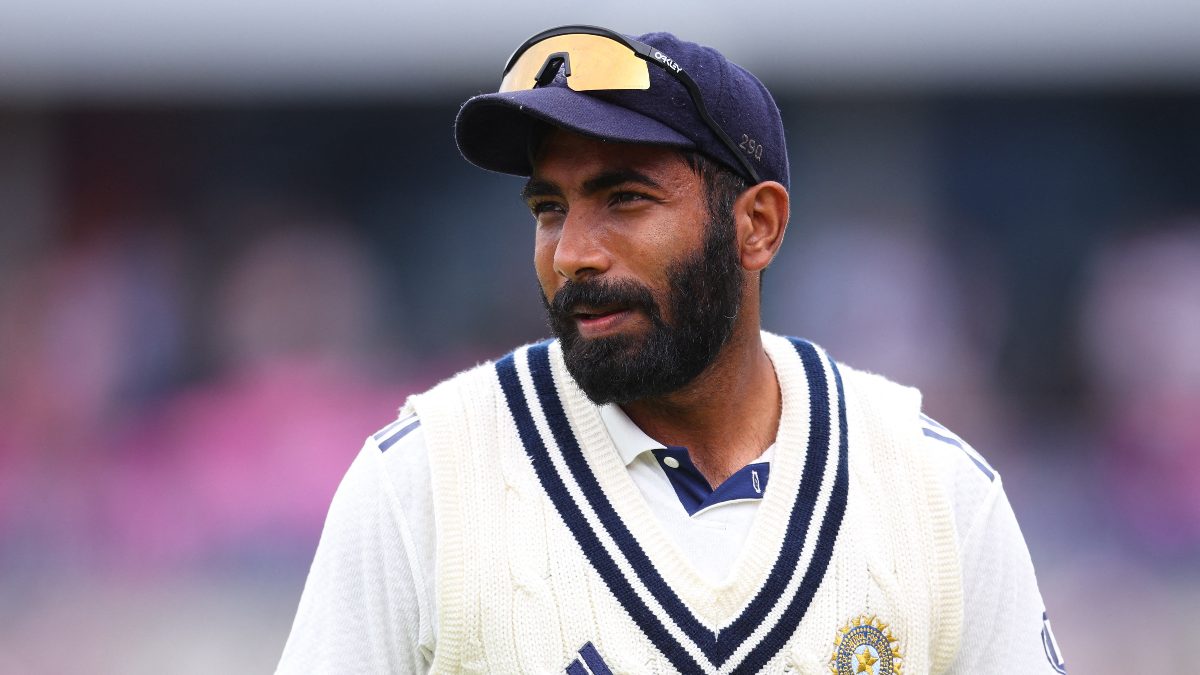No matter what Australia might have feared, no matter what proclamations they themselves might have made in public, India were never going for their target at the Melbourne Cricket Ground on Monday.
After the first two days of the annual Boxing Day fixture that saw the highest crowd (373,691) for a single Test match in Australia ever, the surface at the MCG slowed up considerably. There was not much assistance for the bowlers, true, but the batters didn’t have too much to work with either. That’s why, after run-rates of 3.62 and 3.97 on days one and two respectively, Australia and India together could only score at 2.77 and 2.81 on the third and fourth days.
Against this backdrop, to attempt 340 runs in 92 overs at 3.7 wasn’t just Herculean, it might have been construed as foolhardy to even consider doing so. On a final-day deck, with so much on the line, prudence suggested that the best tack available to the batters was to take the target out of the equation and bat normally, treating each ball on its merit and not worrying too much about where that would take them.
Come to think of it, that’s what Test match batsmanship is at most times, isn’t it? Unless there is an express need or a team order to press on the accelerator – or unless there is a team diktat, like in England’s case, that there is only one way of batting, and that is always attacking, no matter the quality of the opposition bowling, the situation of the game and the nature of the surface – the old adage of taking it one ball at a time holds true in most instances.
India didn’t have the largest mountain to scale on Monday, even they will accept. As skillful and persevering as Mitchell Starc, Pat Cummins and Scott Boland are, as wily and guileful as Nathan Lyon is, not too many balls were going to misbehave even on a day-five deck which defied predictions and flattened out a lot more and lot quicker than anyone had anticipated.
Impact Shorts
More ShortsDespite their familiarity with and command over the 20-over format, India had numerous batters capable of batting out time, armed with excellent defensive techniques and plenty of experience. This would be no breeze, no walk in the park, but the task of keeping Australia at bay for 92 overs wasn’t certainly beyond them.
Two players who have made a name for themselves as aggressive, attacking, no-fear batters best illustrated those traits during a fascinating fourth-wicket alliance that promised to thwart every Aussie design of victory.
Yashasvi Jaiswal is a product of the modern era, who boasts three T20 centuries and a strike-rate of 150.25 in that format, but who also scores at 65.96 runs per 100 balls faced in Test cricket. Rishabh Pant is a known maverick who doesn’t think twice – and maybe that’s his problem sometimes – of playing audacious scoops and reverse scoops to the fastest bowlers when least expected, even in the five-day game. With them at the crease, entertainment is generally guaranteed, even in Test cricket.
But entertainment was at a premium between lunch and tea at the MCG on day five. That is, if you think entertainment is only about punchy fours and towering sixes.
Aggressors Jaiswal and Pant showcase excellent defensive batting
Jaiswal and Pant put their heads down, showcasing a wonderful exhibition of defensive batting. There was surety of movement as they brought the bat down on the ball, either going right forward to smother swing or turn when the ball was pitched up, or right back to negotiate it when it was banged in short. There were no half-measures, no hesitancy in their commitment to defence.
True, there was occasionally the big drive, especially from Jaiswal, but he was lucky enough to avoid the edges. Pant, meanwhile, looked chastened after the backlash that accompanied his dismissal to a first-innings scoop against Scott Boland – dismissed lividly as ‘stupid, stupid, stupid’ on air by the legendary Sunil Gavaskar – and seemed determined to make amends with a defensive knock that most knew was in him, even though it has barely expressed itself in the past.
This was a crucial alliance for India, the one between the two left-handers for the fourth wicket. After all, they had lost their top three – also their three most experienced batters – in the 26.1 overs to lunch, the last of them particularly disappointing both for the manner in which it came and for the timing of the dismissal.
Not for the first, or second, or even third time on this tour, Virat Kohli was out attempting an expansive drive to a wide ball outside off, in the last over before lunch. That came not long after a stubborn Rohit Sharma and the in-form KL Rahul were packed off in the same over by Australia’s magnificent captain, Pat Cummins. Jaiswal and Pant seemed to tell the changing room not to worry as they added 79 in 27.5 overs between lunch and tea without being separated, without looking like being separated.
By tea, Australia were on their last legs. Thirty-eight overs were left in the day but realistically, India had to bat out another 23 with minimal damage to scrape out a draw. Cummins and Co. were tiring. They were hoping for an opening, a lifeline, something to cling to, in their quest for victory. Without warning, Pant provided them that chance, and like all great teams, Australia stormed in and got the job done. In double quick time.
Pant is a force of nature, maybe, but he is no youngster who should fall back on the forgivable impetuosity of youth any longer. In February, he will complete eight years in international cricket. He is reputed to have an excellent cricket brain; it’s time he started putting it to good use. If the first-innings brain-fade was staggering, the second-innings tonk off an admitted long-hop from Travis Head was only slightly less so.
One could argue that there was no need for that stroke at that stage; the counter could be that Pant is the kind who puts bad balls away and that this was a bad ball. No disputing that, but there was no commitment to the stroke, no necessity to attempt a six when a four would have done nicely, not when there was a deepish mid-on in place. Sometimes, it’s all right to set ego aside, to put the team first, to stop believing in one’s invincibility. That’s an internal awakening that no amount of external reinforcing can inculcate.
Mitchell Marsh’s tumbling catch to end Pant’s otherwise admirable resistance for a 104-ball 30 set the proverbial cat among the pigeons. When he was dismissed, 33.2 overs – exactly 200 deliveries – were left in the day’s play. Australia needed only 123 more to get the job done, India spiralling from 121 for three to 155 all out. It wasn’t about the runs, it was never about the runs.
For all their barndoor defensive batting, India had nothing to show, no silver lining, no light at the end of a dark and foreboding tunnel. Spare a thought for Jaiswal, run out for 82 in the first innings through no fault of his, dismissed for two runs more in the second. In the first innings, he faced 118 balls, scoring at 69.49. In the second, his 84 spanned 310 minutes, came off 208 deliveries (strike-rate 40.38).
The youngest batter in India’s top six – in age, in Test match experience – put on a sterling display of stonewalling but it was lost on the rest. Most notably on Kohli and Pant, both getting themselves out, which was the ultimate betrayal in the desperate struggle for survival.


)

)
)
)
)
)
)
)
)



